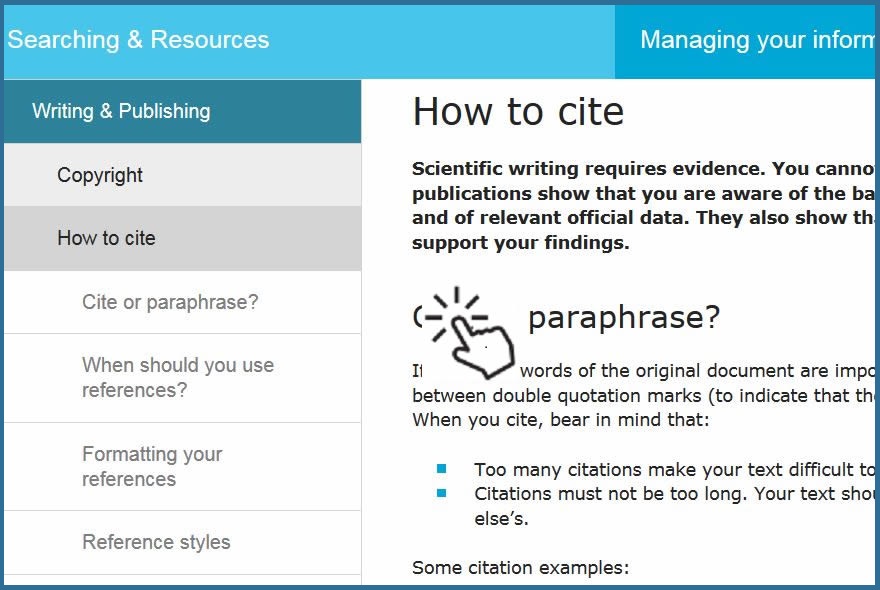References
You will now use the relevant publications you found in your own work. You can use them to, for example:
- substantiate your own statements
- describe the context of your subject
- give examples
- show different opinions about your subject
Avoid plagiarism by listing the source of every citation, every paraphrase and every image or photograph that you copy, and make sure you have a complete and correct literature list.

Figure 1. Reprinted from Mimi and Eunice: thief (Paley, 2010)
Paley, N. (2010). Mimi and Eunice: thief. Mimi and Eunice, July 30th, 2010. Retrieved on 23 May, 2014, from http://mimiandeunice.com/2010/07/30/thief/
Citing & paraphrasing
This was covered in Information Literacy 1, but you can read it again in the TUlib module below.
|


http://tulib.tudelft.nl/writing-publishing/how-to-cite/
|

1 |
Is this text a paraphrase or a citation?
In an article from Robert Visscher (2013) in Delta professor Van Arem predicts that automated systems such as the Traffic Jam Asssistant and parallel parking will be introduced soon in the automotive industry.
Visscher, R. (2013). Driverless cars. Delta, 18 november 2013. Retrieved on 17 March, 2014 from http://www.delta.tudelft.nl/artikel/driverless-cars/27453
|
|
Literature list
|

Your paper ends with a literature list.
The literature list must meet the following requirements:
- The list must be complete - all references used in the text must be included in the list.
- The list must not contain any publications that you have read as background information, but which you have not used in your paper.
- The entire list must be ordered and formatted consistently, according to a single reference style, such as APA or Chicago (often prescribed by your professor).
- The list must also contain references for figures, graphs, tables, datasets, etc. that you have used.
|

2 |
Which requirements must a literature list meet?
|
|





